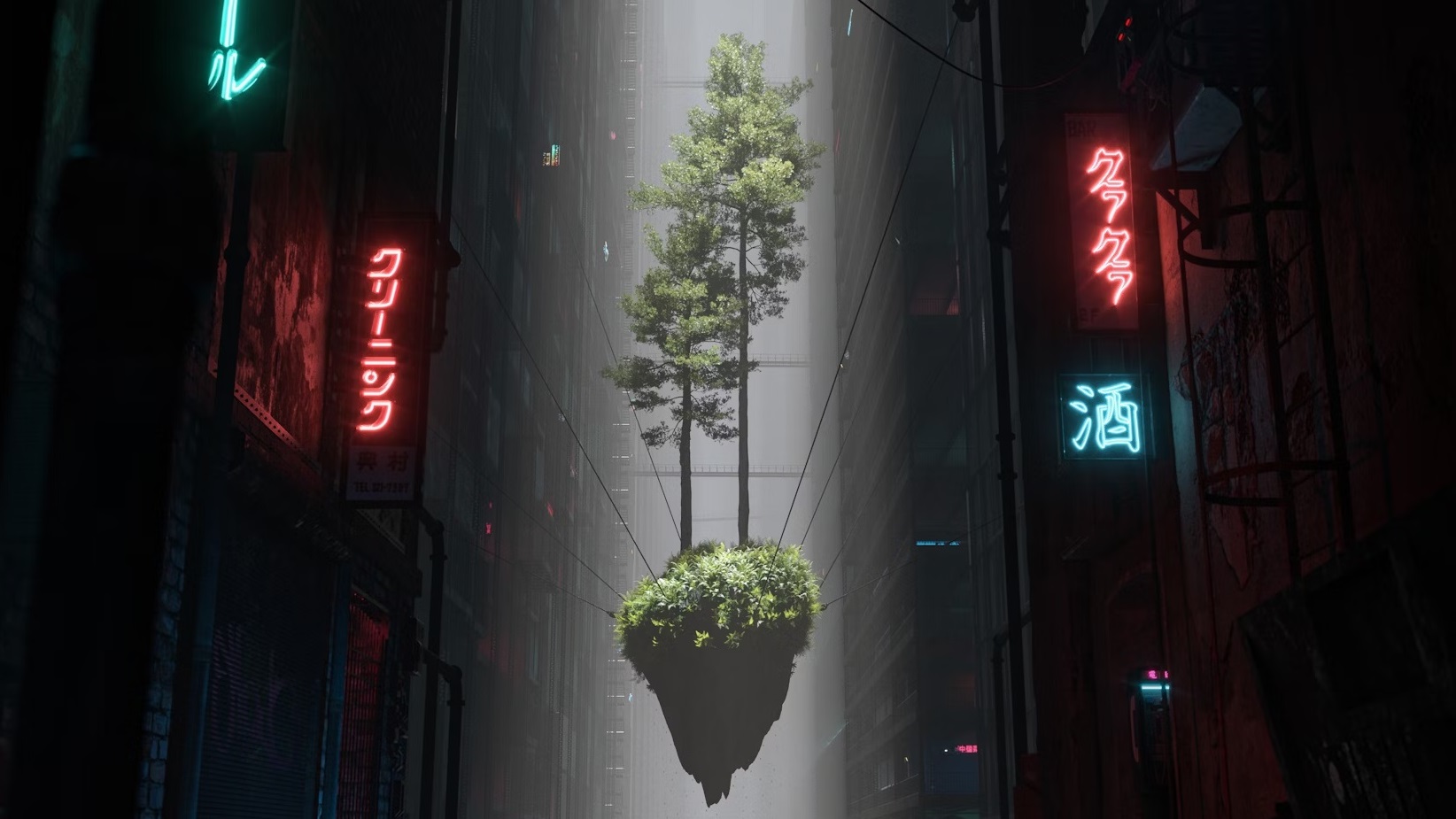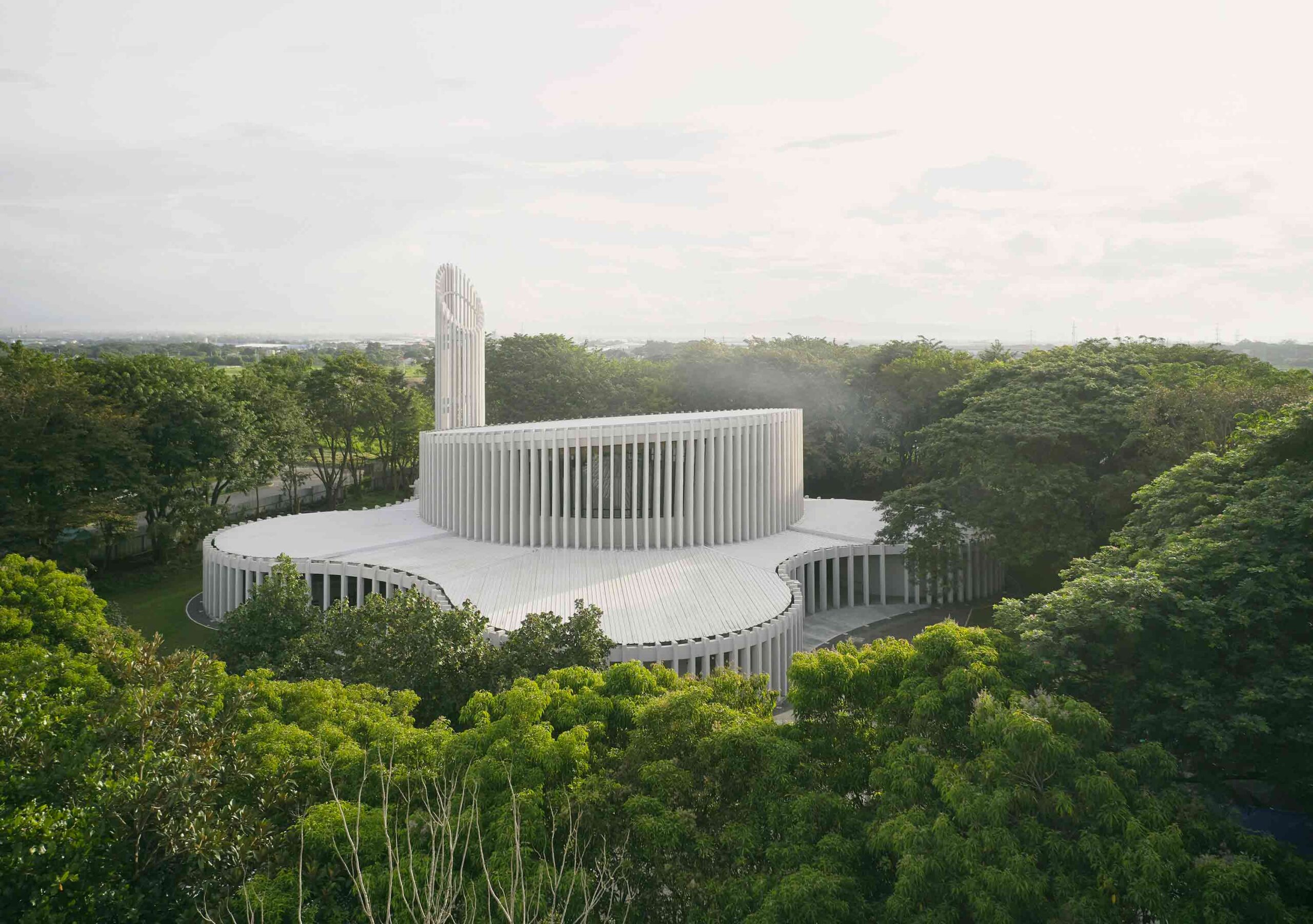We are thrilled to announce the winners of Architizer's inaugural Vision Awards, the world’s biggest awards program dedicated to the art of architectural representation. Sign up to receive future program updates >
Architecture is becoming redefined by artificial intelligence. As architect Jet Geaghan has pointed out, “The quickening pace of AI’s development is both alarming and exciting, fueling speculation about our own obsolescence.” From questions of whether A.I. will destroy creativity to celebrating the extinction of the CAD Monkey, these developments point back to the tension between man-made art and AI-generated designs. As designers navigate these waters, Architizer launched the Vision Awards to recognize the students, professionals and studios who are working through these questions and envisioning the world’s architecture.
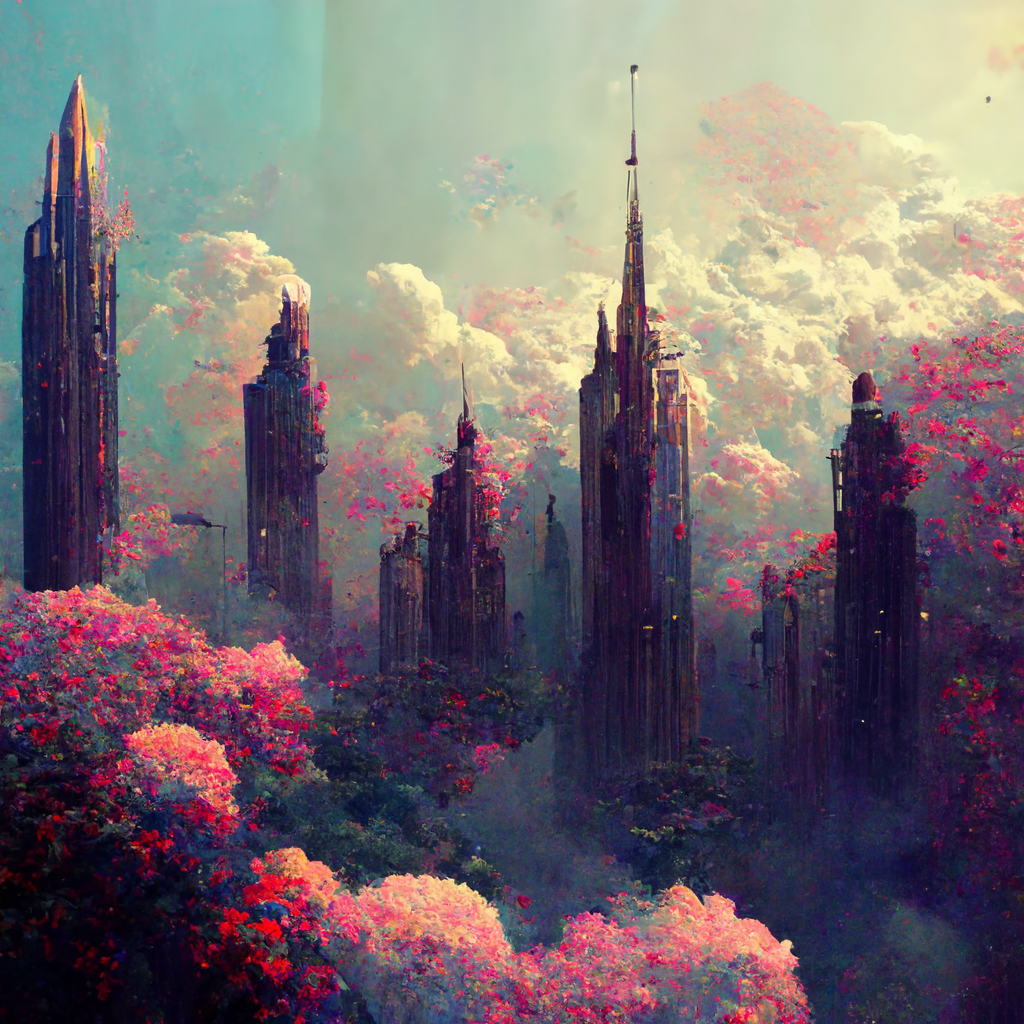
City landscape generated by Midjourney v. 4. Artist: Kent Madsen. via Wikimedia Commons
This year, there were hundreds of entries submitted across more than 30 categories, and we’re taking a closer look at two that juxtapose Artistic and AI-Assisted visualization. The following six projects highlight the Vision Award Winners in these two categories for students, professionals and studios:
Artistic – When done well, an artistic visualization can powerfully communicate the experiential qualities of a space and illuminate the concept behind a building. This category rewards non-photorealistic, computer-generated visualizations, renderings and illustrations that portray architecture in some form. The visualization can be located anywhere in the world, be at any scale, and can take the form of a perspective, parallel projection, section, abstract or any other image format.
AI-Assisted Rendering – Artificial intelligence is changing the art and craft of architectural representation as we know it. While it can mimic many forms of representation, it is a separate craft. This category rewards innovative AI-assisted architectural visualizations, using tools such as Midjourney, DALL·E, Craiyon, Dream by WOMBO, and other similar applications. While images must be original and unique, they can include real or imagined architecture and be created in any artistic style.
Bloom – Film Still
By Jack London Freedman, Kaustubh Kulkarni, and Fang Shu, Student Winner, Artistic Visualization
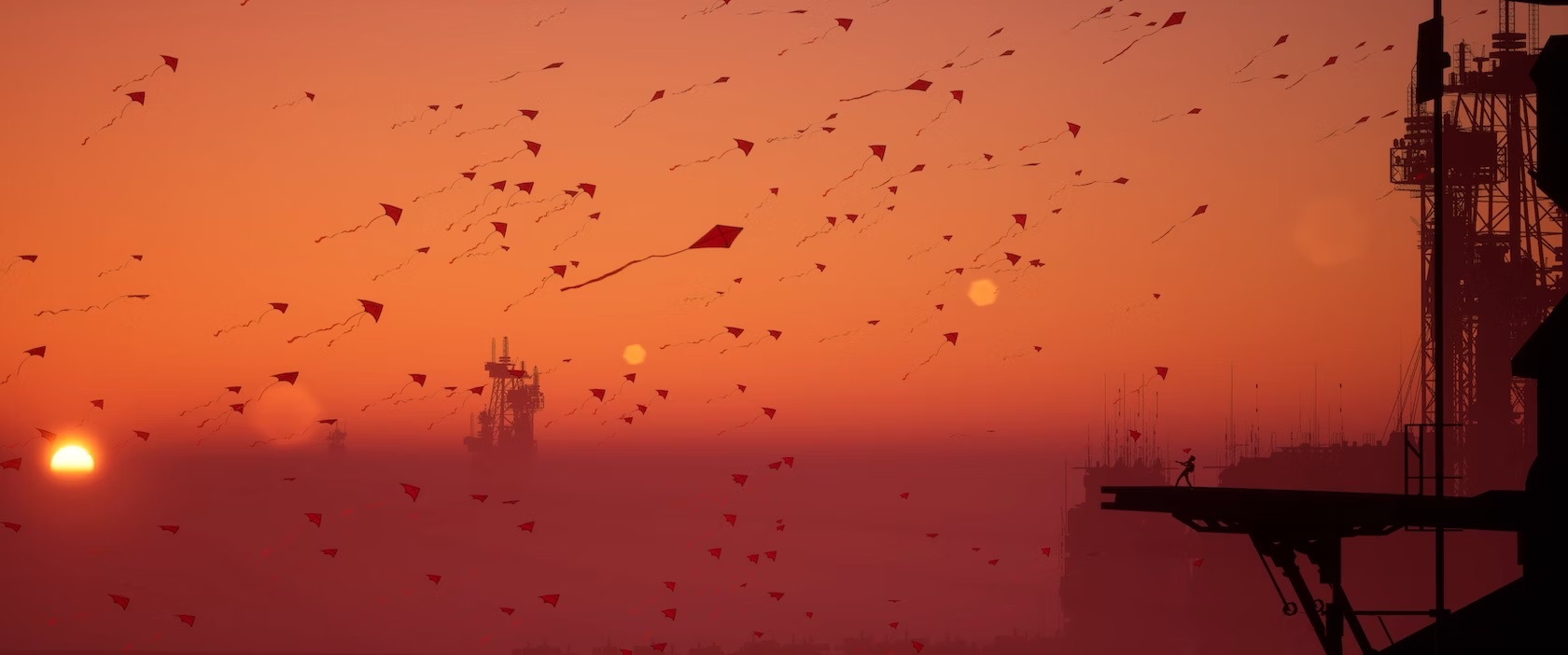
Created using Rhino, Blender and Unreal Engine
“Our story engages with the infrastructural sublime at the planetary scale and explores themes of anthropogenic mass-migration, adaptation, resilience, cultural celebration, and optimism. In speculating on a future of humankind, the ocean will be leveraged for its carbon-sinking potential. It will take 40 billion square feet of phytoplankton farming in six-hundred and forty city-sized floating nodes to reverse generations of destruction of our planet. Our story brings us to just one node and the memory of just one child, building a new home.”
Silk & Stone
By Mohammad Qasim Iqbal, Student Winner, AI Assisted Visualization
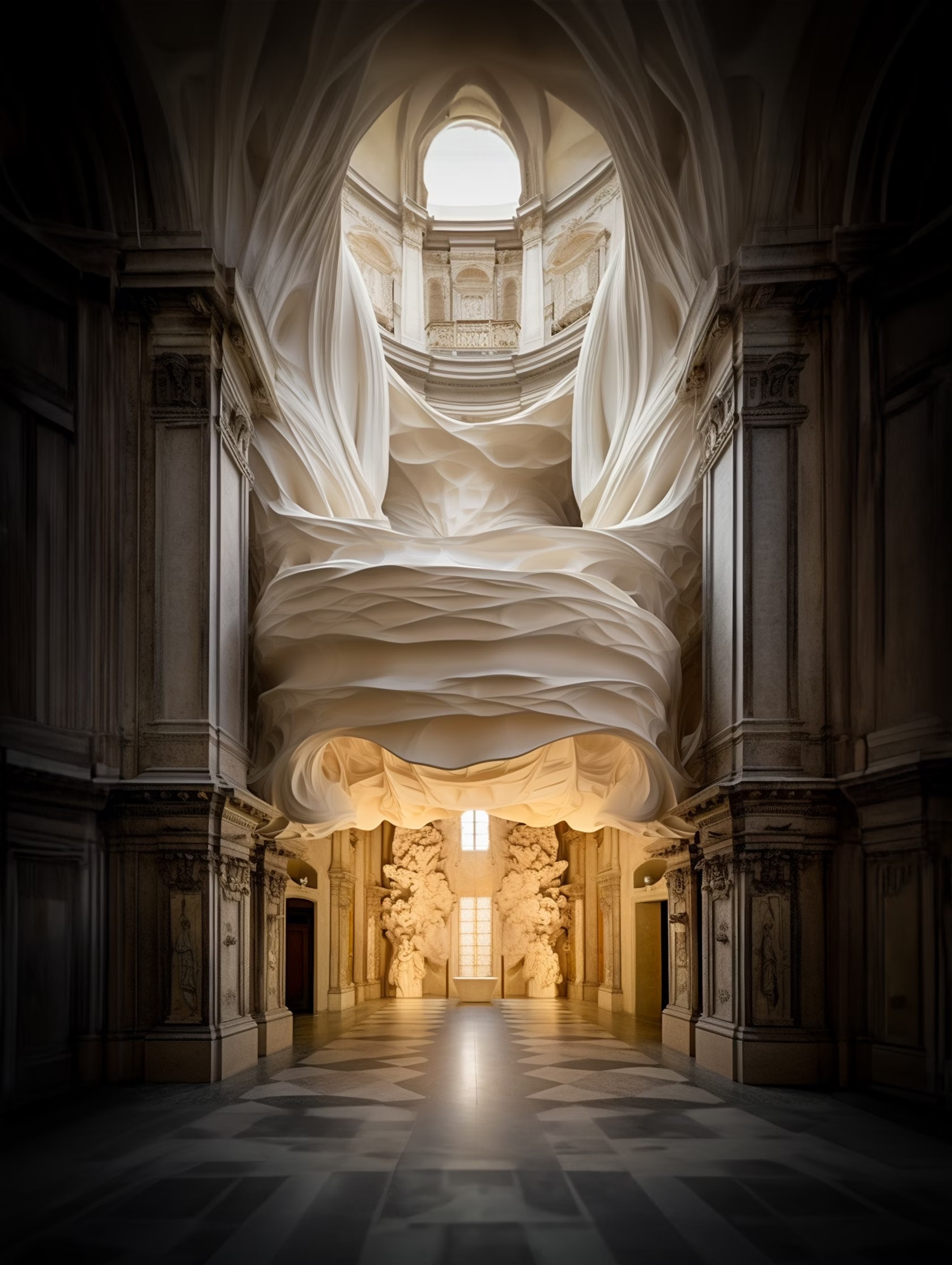
Created using Midjourney, Photoshop, Photoshop AI Generative Fill
“The Silk and Stone interior visual encapsulates the concept of the image completely. The idea was to use AI to combine my fascination with the Baroque architectural style with my inquisitive mannerist approach. For me the Architect must question the status quo, push the boundaries, and always attempt to bridge the gap between the reality and the dream. This is how this image was imagined, it uses the baroque characteristics of continuity and fluidity to blur the boundaries between architecture and art.
This dialogue is done using silk and stone, they merge into one another effortlessly, interchanging properties, becoming the contradiction of their normal state confusing the viewer in a beautiful entanglement between fabric and stone. The visual entices the viewer to follow the suggestive forms towards an unreachable beginning, the viewer is left with a beautiful contradiction, an incomplete whole that will leave them with the lesson of slowness.”
Shanty Stack
By Arnaud Imobersteg, Professional Winner, Artistic Visualization
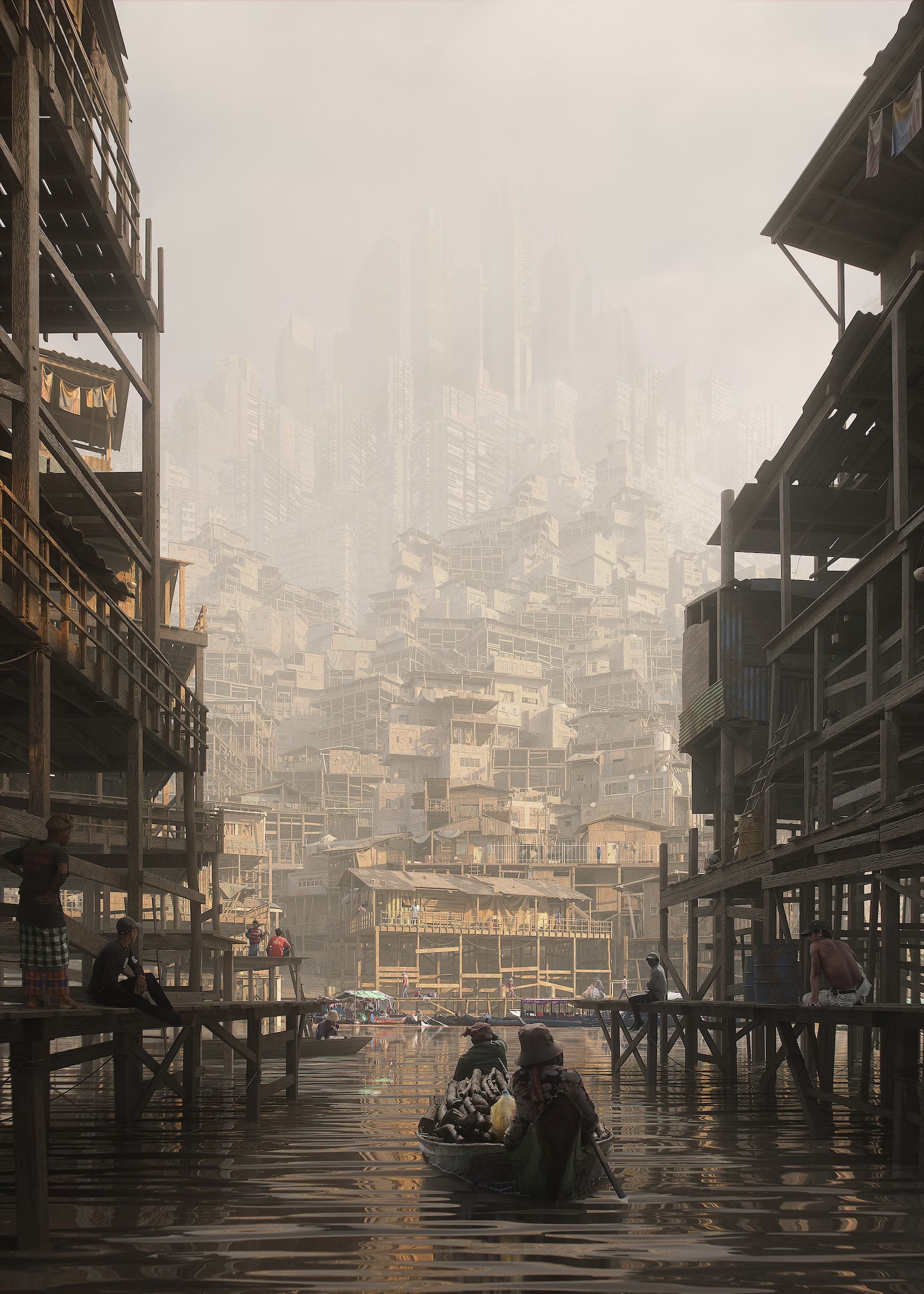
Created using Blender, Cycles and Photoshop
“The sun is warming the air as the market is closing now. My shirt is already sticking to my skin. They advised to avoid going out, but I feel good, I’m only coughing.Uncle Alisha is saying he got sick because it’s not air anymore, he says that before we used to see the sky and it was blue. But I don’t know, maybe he’s just getting old; he’s already 37. The Stack is constantly growing as new people are moving in. Are they coming from Above?”
The habitat of life
By WEI TIANJUN, Professional Winner, AI Assisted Visualization
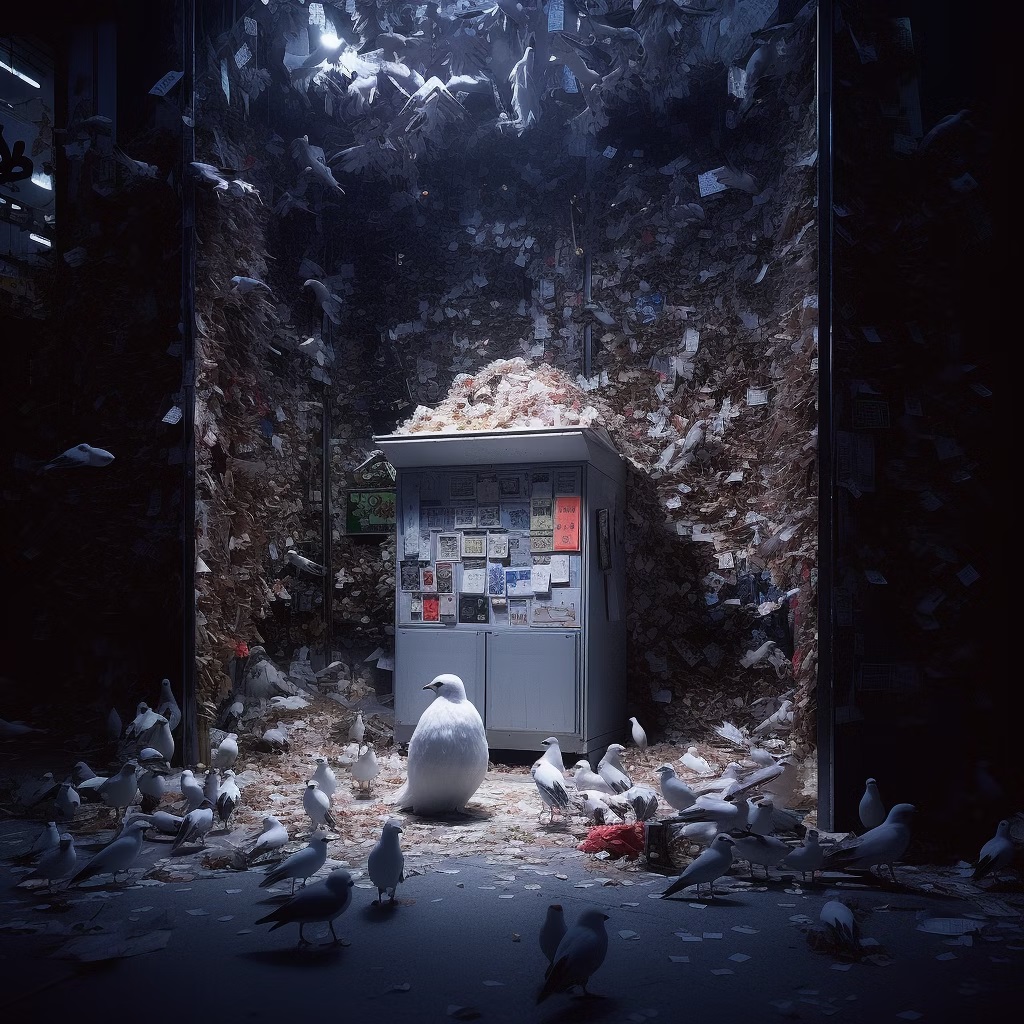
Created using Midjourney
“Humans consider themselves the masters of nature and disregard animals. We ruthlessly expand our territories, erecting many shiny and attractive buildings that have caused extensive damage to the Earth’s environment. In contrast, animals are able to integrate their habitats into the surrounding environment. These habitats are more like places for life to thrive, and perhaps in the eyes of animals, human behavior is scorned.”
Unsupervised
By Refik Anadol Studio, Studio Winner, AI Assisted Visualization
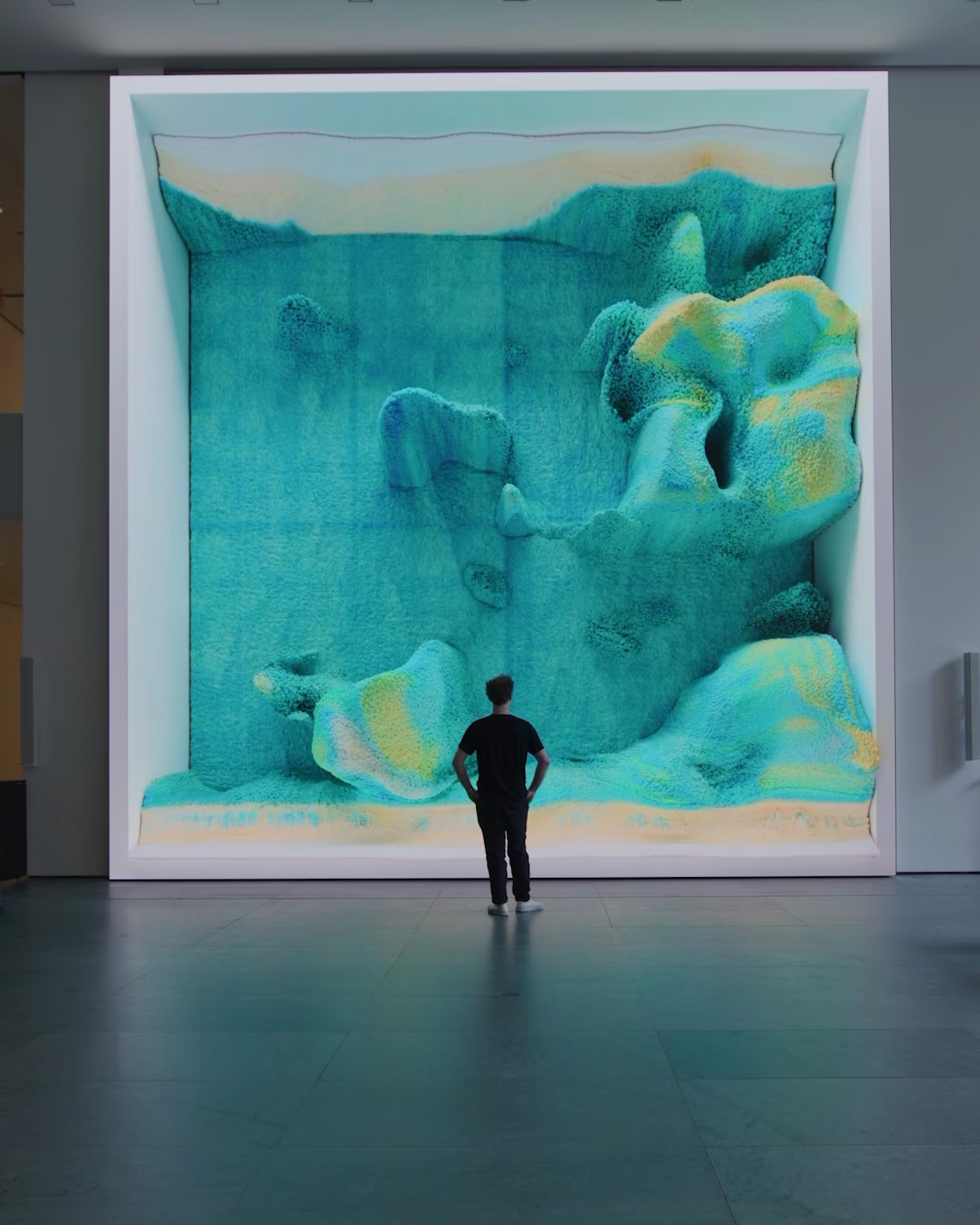
For Unsupervised, Refik Anadol Studio synthesized the vast data collected from the MoMA’s publicly available metadata archive into ethereal data pigments, and eventually into a representational form of fluid-inspired movements with the help of generative algorithms and a custom software called Latent Space Browser, which the studio has been developing since 2017.
What would a machine mind dream of after “seeing” the vast collection of The Museum of Modern Art? Unsupervised uses artificial intelligence to answer this question by interpreting and transforming more than 200 years of art at MoMA. For this meditation on technology, creativity and modern art, Refik Anadol Studio trained a sophisticated machine-learning model to interpret the publicly available data of MoMA’s collection. As the model “walks” through its conception of this vast range of works, it reimagines the history of modern art and what might be to come.
Forest
By Leckie Studio Architecture + Design / Mute Images, Studio Winner, Artistic Visualization
 Leckie Studio Architecture + Design is an interdisciplinary design studio based in Vancouver, Canada. The studio was founded in 2015 by principal architect Michael Leckie. Mute Images is committed to creating captivating images that bring attention to architecture and architects, and the studio is also based in Vancouver, Canada. Together, the team put together a captivating illustration, paired with a simple description:
Leckie Studio Architecture + Design is an interdisciplinary design studio based in Vancouver, Canada. The studio was founded in 2015 by principal architect Michael Leckie. Mute Images is committed to creating captivating images that bring attention to architecture and architects, and the studio is also based in Vancouver, Canada. Together, the team put together a captivating illustration, paired with a simple description:
“The true meaning of life is to plant trees, under whose shade you do not expect to sit.”
— Nelson Henderson
We are thrilled to announce the winners of Architizer's inaugural Vision Awards, the world’s biggest awards program dedicated to the art of architectural representation. Sign up to receive future program updates >
